To those new to the world of biking, the choice of equipment out there can be mind boggling. The number of configurations available is already impressive, and seems to grow year by year. So, to make understanding it all a little bit easier, here is an explanation of all the acronyms, abbreviations and jargon found in the world of drivetrains.

Componentry
A drivetrain system is split into a number of components that all work together to transfer power from your legs to the wheels. The components of a drivetrain (also known simply as “gears”) are as follows:
Cranks: The parts through which the force from your legs is transferred. These have one or more “chain-rings” attached that allow this force to be transferred to the chain. They spin on a set of bearings found in the “Bottom Bracket”.
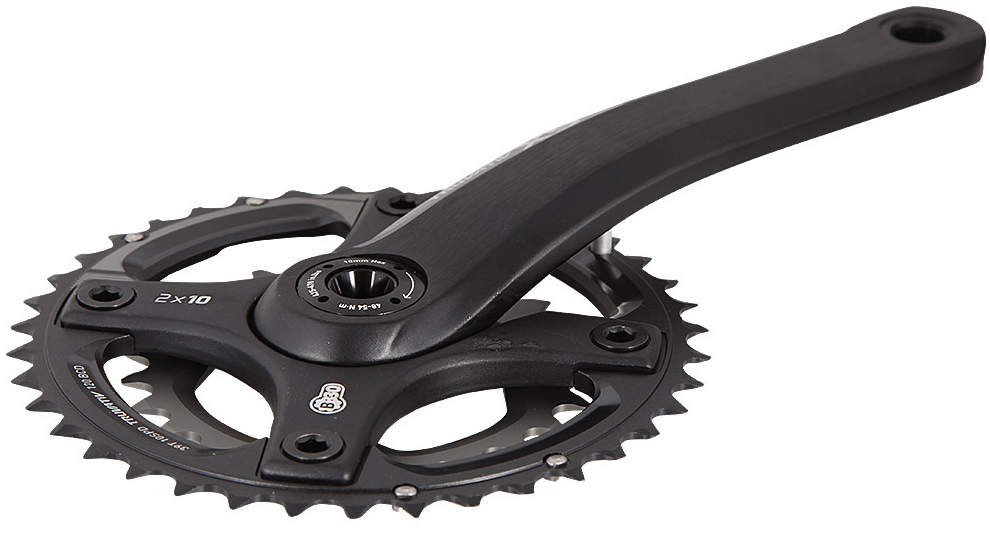
Chain: Fairly self-explanatory, this transfers power applied at the cranks towards the rear wheel where it can be converted into forward movement.
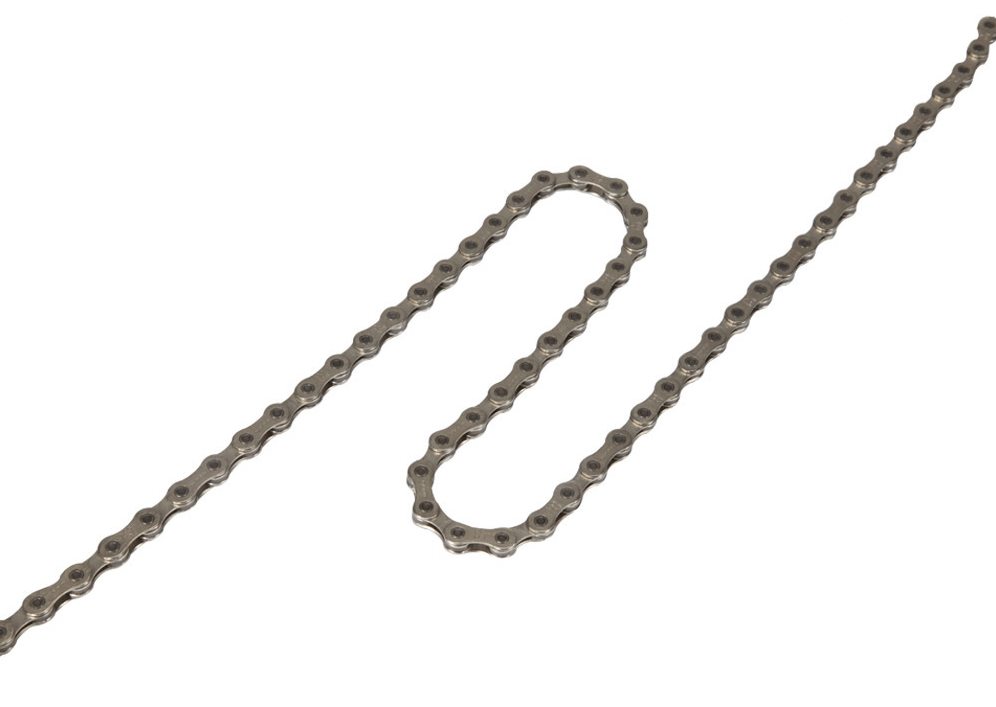
Cassette: Large set of cogs attached to the rear wheel of the bike. This is where the majority of gear changing/shifting will occur for most riders.
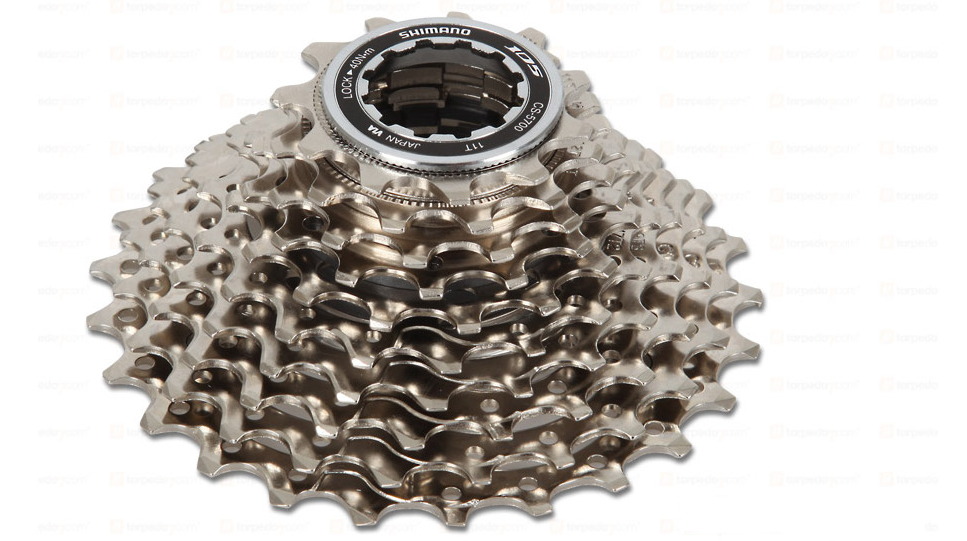
Front and Rear Derailleurs: Pivoting frames that are responsible for moving the chain from cog to cog in order to change the gear ratio of the bike and hence how “hard” the gearing is. This translates to how fast the bike will move for a given cadence. Rear derailleurs may be “clutch equipped,” which refers to a high tension mechanism built into the unit that makes it harder for the chain to fall off the bike.
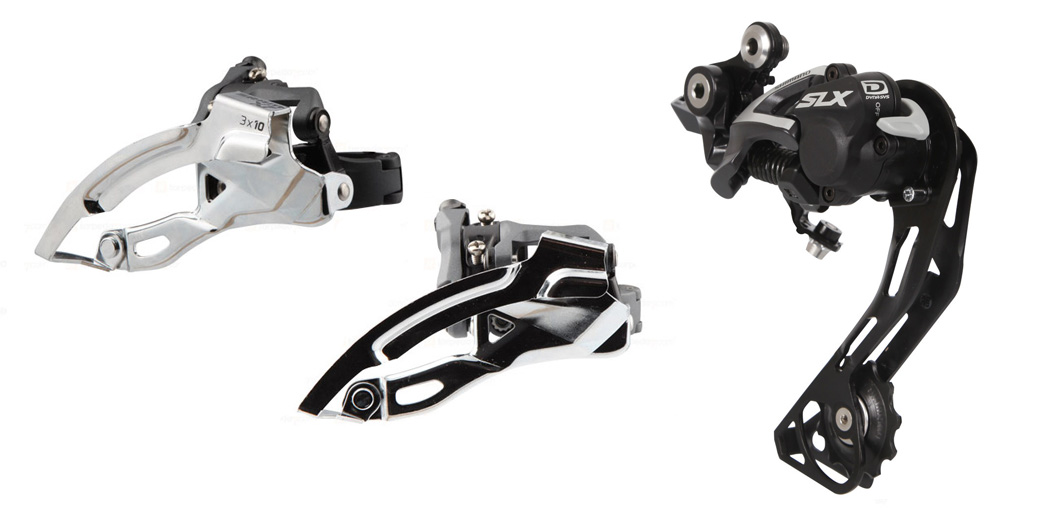
Shifter: Units at the handlebars responsible for controlling the movement of the derailleurs and hence deciding what gear the bike is in at any given moment. Shifters may be “trigger shifters” (the most common on modern mountain bikes) or in some cases “grip shifters”. They are connected to the derailleurs by a cable, although in some high end systems electronics may be used instead.
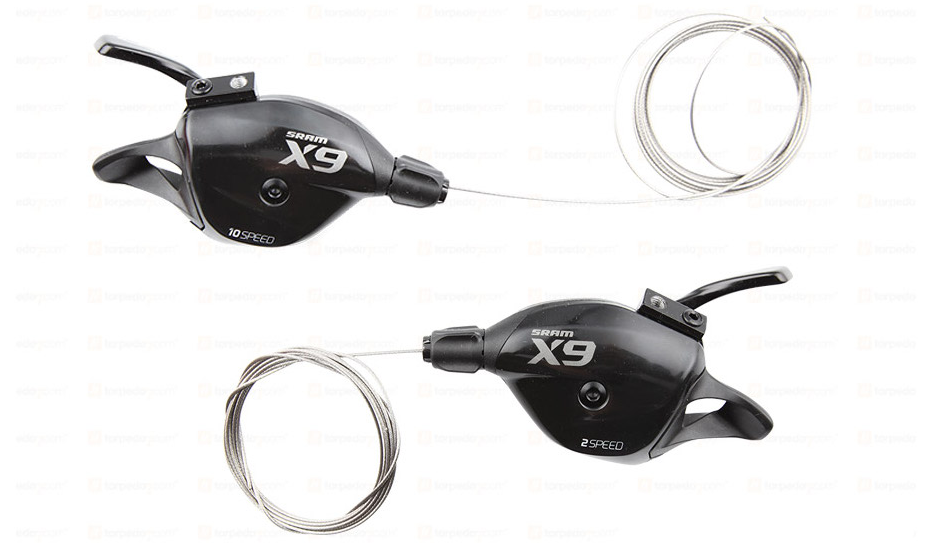
Types of Systems
Many new bikers are instructed to look for a bike with “Shimano” drivetrains or “SRAM” drivetrains, but what does this actually mean? SRAM and Shimano are not types of drivetrains, but actually brands. Shimano is a Japanese company (the same one who also makes fishing and rowing equipment) and SRAM is an American company who also produce a number of other cycling products through various other companies owned by them. With the occasional exception, componentry from the two brands is typically not cross compatible.
You will also hear a number of descriptions such as 2×10, 1×11, XTR, SLX, XX1, XO etc when referring to Mountain Bike drivetrains. Here is an explanation of what all that means:
2×10, 1×11 etc: This refers to the number of gears on offer in a given drivetrain. The first number refers to the number of gears/chainrings attached to the cranks, and therefore the number of “front gears”. For example, a 2×10 system has 2 gears at the front. The second number refers to the number of rear gears, or cogs on the cassette. So, our 2×10 example has 2 front gears and 10 rear gears, giving a total of 20 gears. A 1×11 system has 1 gear at the front, and hence does not need a front shifter and derailleur, but has 11 gears at the rear.
Bikes will have 1,2 or 3 gears at the front, and between 7 and 11 gears on the rear. Typically the more expensive the drivetrain the more gears on the rear of the bike, with the number of front gears being a personal preference dependent on fitness, ability and local terrain. Bikes with no gear options other than the one fitted, i.e one gear on front and rear, are known as single speeds.

Increasingly common, singe ring cranks are light and simple. They also use a specially profiled chain-ring to prevent chain dropping.
Brand hierarchy, from most expensive to least, is as follows.
Shimano: MTB
- XTR
- XT
- SLX
- Deore
- Alivio
- Altus
Shimano: Road
- Dura Ace
- Ultegra
- 105
- Tiagra
- Sora
SRAM
- XX/XX1
- XO/XO1
- X9/X1
- X7
- X5
- X4
Within each level of componentry, there will be a number of gearing options available that varies from brand to brand. For example, Shimano XTR, XT, SLX and Deore, and SRAM XO, X9 and X7 are all available in anywhere from 7 gears to 10 gears on the rear of the bike, depending on the age of the drivetrain. As a reference for relevant weight, performance and cost, XX is roughly equivalent to XTR, X9 is roughly equivalent to XT, with XO fitting in between XX and X9.
On more expensive offerings such as XTR, Dura Ace, XT, Ultegra, XX1 and XO1 we are starting to see the availability of drivetrains with 11 gears on the rear. At the moment this is limited to the more expensive options and will only be found on high end bikes.
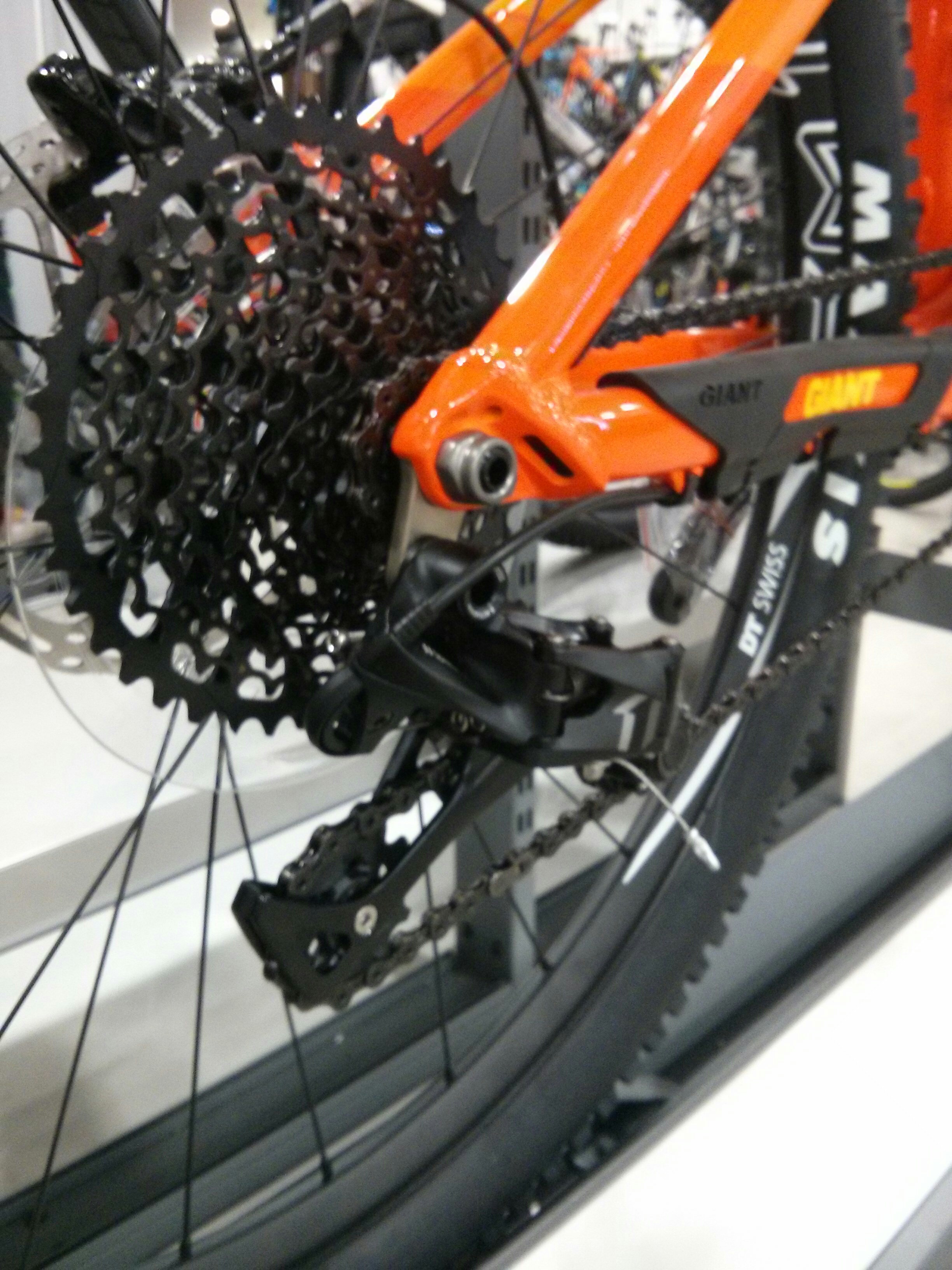
11 speed systems such as SRAM’s XO1 use a wide range cassette to maintain a usable range of gears.
With all this in mind, you should now be able to navigate through the basics of jargon related to bike gearing. If you have any burning questions or just want to know more, visit your local Torpedo7 and talk to the bike department staff, they’ll be happy to help!
See you out there!


















